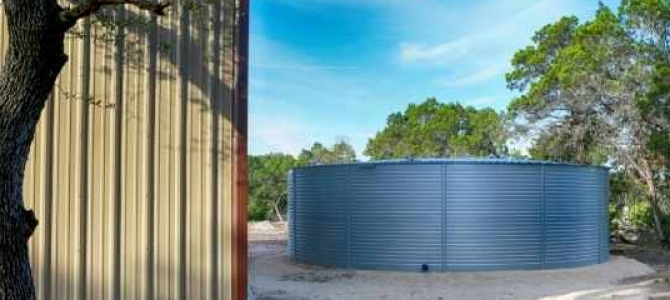 Shopping Cart
Shopping Cart
07 August 2025
What is a water tank level indicator and Why is it Essential?

A water tank level indicator is a sensor-driven device that provides real-time information about water levels in storage tanks, helping users efficiently manage water supplies and avoid shortages. The instant visibility and alert features make tank management easy for homes, businesses, and farms, preventing water waste and delivering peace of mind.
In today’s world of rising water costs and increasing sustainability demands, knowing your exact water tank level is not optional; it's a necessity. Smart water tank level indicators, like those developed by Smart Water, produce highly accurate, up-to-the-minute readings and transmit these directly to a digital display or your mobile device. This proactive monitoring enables you to detect leaks, optimise your usage, and ensure you never run out, whether that’s in urban homes, rural properties, or large business operations. To see the full range of advanced sensing solutions, browse the Smart Water tank level indicator collection.
How Does a Smart Water Tank Level Indicator Work?
Smart water tank level indicators operate with sensor technologies such as ultrasonic or pressure-based sensors, transmitting continuous and accurate data about tank levels to a hub, app, or display.
- Ultrasonic sensors emit high-frequency sound waves that bounce off the water surface. The time it takes for the echo to return translates into an accurate measurement of water depth.
- Pressure-based sensors measure the force exerted by the column of water above and convert this into level readings.
- Mobile Integration: This data is relayed wirelessly to an LCD screen or a mobile phone app for instant status updates and control, even from remote locations.
Modern Smart Water systems can be installed in tanks with different shapes, sizes, and depths (with sensors available in 4-meter and 10-meter lengths), including solutions for both above and below-ground tanks. Advanced models even cater for high-pressure conditions or unusual fluids. See Smart Water’s guide to sensor types for more technical details.
What Are the Key Features of a Smart Wireless Water Tank Level Indicator?
Cutting-edge tank level indicators come equipped with an array of user-focused features:
- Real-time level monitoring via app or LCD display - no need to visually check the tank.
- Custom alerts and notifications for low levels, abnormal patterns, or possible leaks.
- Historical data analytics to optimise future usage and spot trends.
- Remote management of pumps and tank refilling, even when you’re away.
- Simple installation and DIY maintenance with plug-and-play hardware.
- Multi-tank compatibility, enabling management of up to 12 tanks from a single app or hub.
- Solar-compatible options for sites without mains power.
These features together help prevent shortages, reduce the risk of tank or pump damage, avoid costly overflows, and make water management effortless for all users. For an overview of solutions, visit Smart Water’s wireless tank level monitoring page.
What Are the Benefits of Using a Tank Level Indicator for Households and Businesses?
The immediate and long-term benefits of water tank level indicators include:
- Efficient resource management: Real-time data supports smarter day-to-day usage and conservation.
- Leak and issue detection: Sudden drops in level or abnormal usage patterns can signal leaks, preventing major water loss.
- Cost savings: Avoid paying for wasted water and unnecessary maintenance. Many users report lower water and electricity bills.
- Longer equipment life: Protects pumps from dry-running or being overworked due to overflows or shortages, reducing repair and replacement costs.
- Improved sustainability: Every drop saved helps the environment, and monitoring usage is an easy first step for families and businesses aiming for greener operations.
- Peace of mind and compliance: Remote monitoring and alerts allow you to act fast if there’s a problem, and many industries appreciate compliance and audit advantages.
Those managing multiple tanks or high-volume water operations, such as farmers or commercial facilities, especially benefit from multi-tank support and advanced analytics for optimizing broad-scale water use. Dive deeper into commercial applications.
What Types of Water Tanks Are Compatible with Smart Water Tank Level Indicators?
Virtually all tank materials, shapes, and installations can be monitored, from residential plastic water tanks to large farm reservoirs or industrial cisterns. Systems are available for:
- Above-ground and underground tanks.
- Multiple tanks managed via a single hub or keypad.
- Varied tank depths (up to 10+ meters).
- Pressurised systems or open reservoirs.
- Rainwater harvesting systems, irrigation, potable, greywater, and chemical applications.
To find out which tank level indicator is best for your setup, check the detailed compatibility guide.
How Do You Install and Maintain a Smart Water Tank Level Indicator?
Smart Water makes installation straightforward, even for DIY enthusiasts. Most systems include step-by-step guides and video tutorials:
- Position the tank sensor vertically for accurate readings.
- Secure the sensor to avoid interference or movement.
- Connect the sensor to the transmitter (wirelessly or via cable, as required).
- Sync the display or mobile app, following on-screen setup instructions.
- Test and calibrate the system - check the readout matches real water levels.
- Set up custom alerts and notifications.
Maintenance is minimal: periodically check sensor cleanliness, replace batteries or solar power backup as needed, and update software for app-based systems. For a step-by-step walk-through, see the Smart Water installation guides.
What Questions Should You Ask Before Buying a Tank Level Indicator?
- Is the system compatible with your tank material, shape, and size?
- Do you require single-tank or multi-tank monitoring?
- Will the device integrate with your preferred app or display?
- Are there solar-powered options for off-grid or remote locations?
- Does the manufacturer provide local support and installation guides?
More information on system selection can be found in Smart Water’s buying guide.
Frequently Asked Questions (FAQs) About Smart Water Tank Level Indicators
Can I monitor multiple tanks at once?
Yes, advanced systems support up to 12 tanks from one app or hub—ideal for farms or businesses.
Are Smart Water tank indicators suitable for underground tanks?
Absolutely. Look for pressure or ultrasonic sensor models compatible with all common installations, including sub-surface tanks.
How accurate are the sensors?
Smart Water sensors deliver ongoing measurement accuracy within +/-0.1%.
What does the installation process involve?
Most kits are designed for DIY installation, with no specialist tools required—just follow the supplied guides or videos.
Will a tank level indicator save money?
Yes. You’ll save by preventing water loss, extending equipment life, and optimizing water and energy use.
Does Smart Water provide ongoing support or advice?
Yes. Explore their help centre and detailed product resources.
Explore Smart Water Solutions
Ready for smarter, more sustainable water management? Discover Smart Water’s innovative tank level monitoring systems, installation guides, and industry insights at Smart Water Online. Empower your home, business, or farm to conserve water, reduce costs, and monitor every tank at a glance.
Related posts
· Is it worth getting a water tank?
· What size water tank do I need?
· Should New Zealand be more proactive in collecting rainwater?
